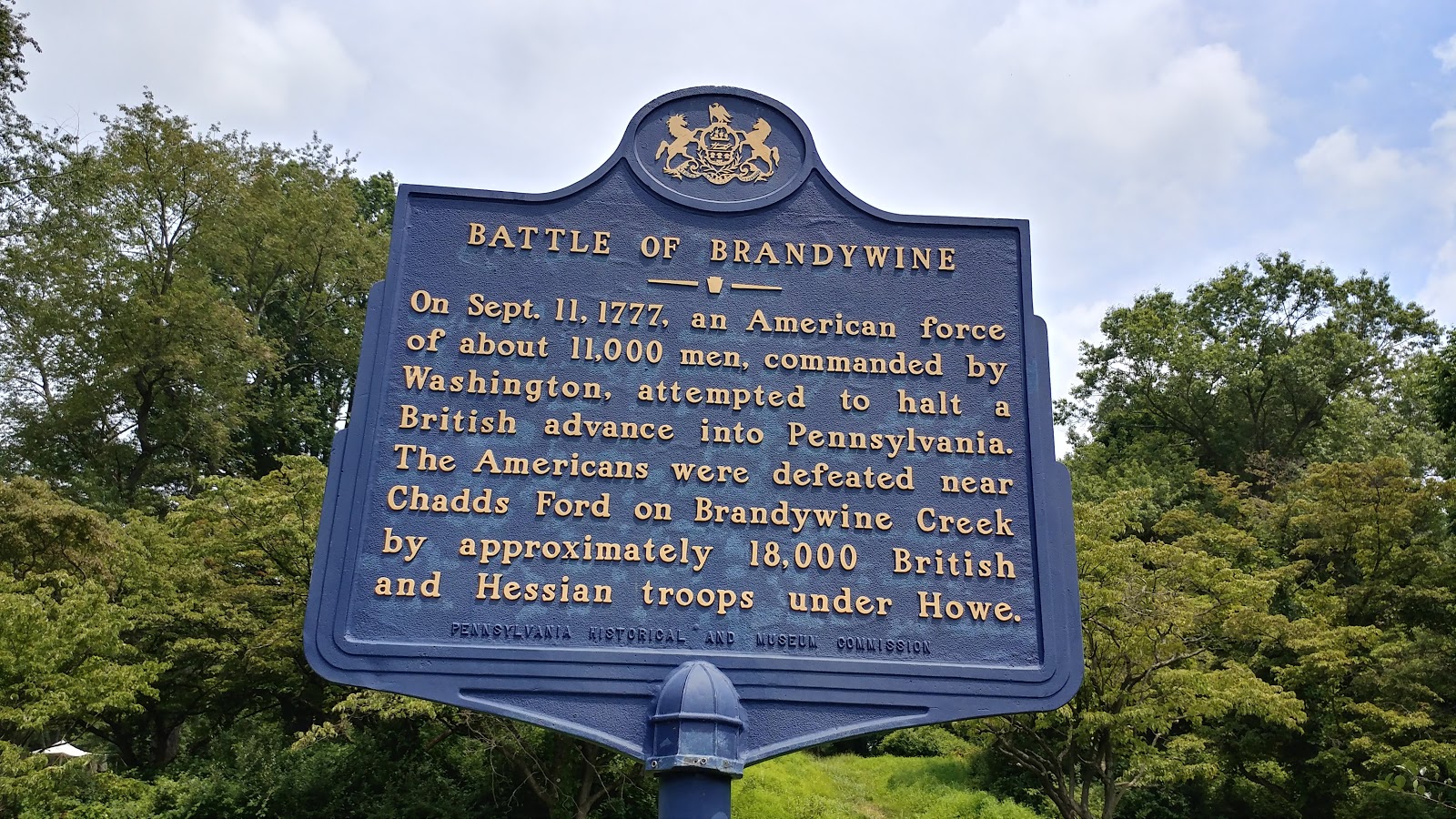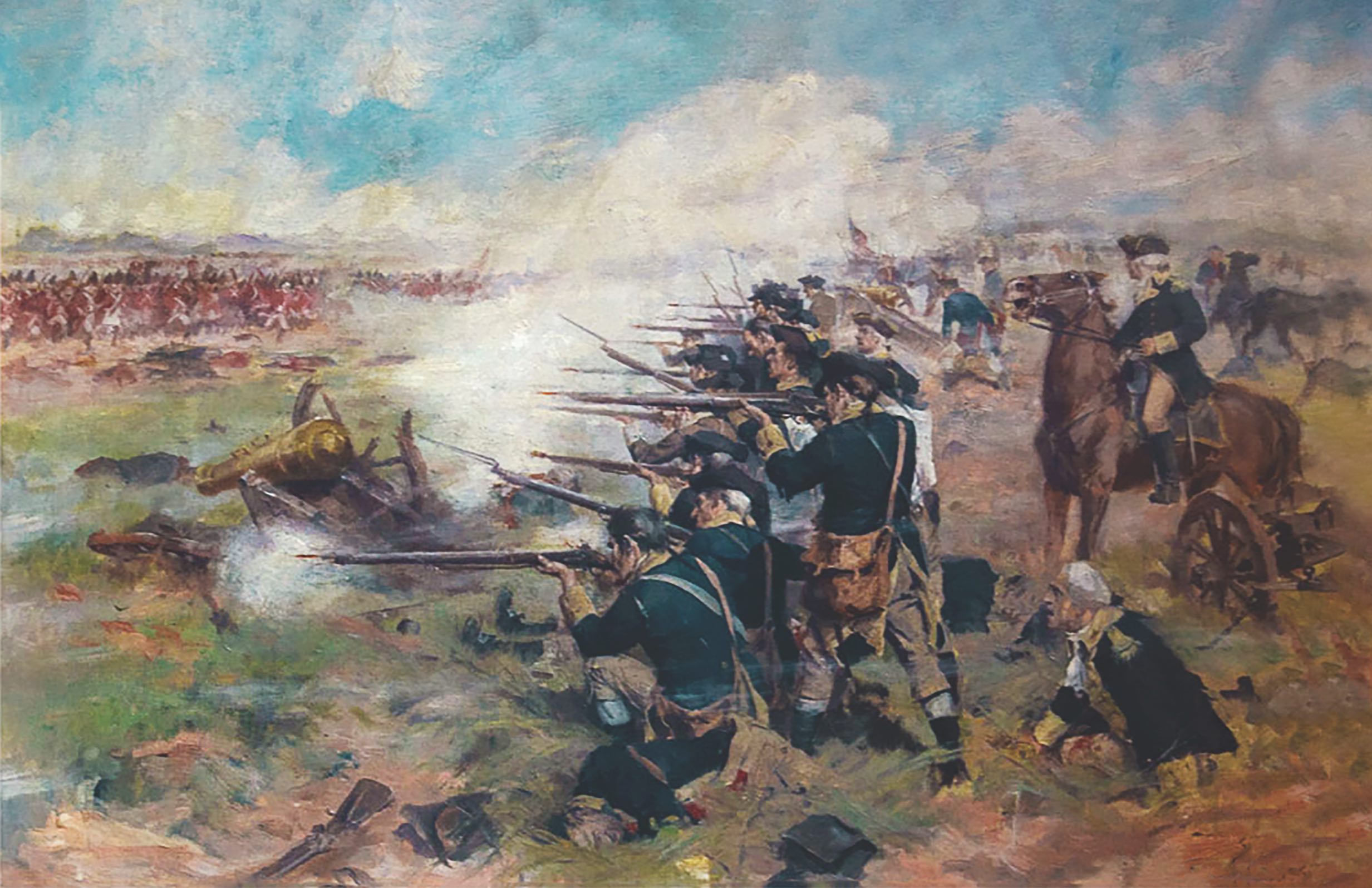|
Brandywine: a battlefield overlooked A rambling by Tom Knapp
Even though it cost the fledgling nation its capital. "It was one of the largest battles of the American Revolution," says Samuel Slaymaker, director of Rock Ford Plantation in Lancaster, Pennsylvania, where General Edward Hand retired after the war. (Hand, who was an adjutant general of the Continental Army under General George Washington, was not present at Brandywine, Slaymaker says, but rather was commanding Fort Pitt in western Pennsylvania when the Battle of Brandywine took place on Sept. 11, 1777.) Even so, Slaymaker knows his Revolutionary War history, and Brandywine carries a great deal of importance. "It was critically important because Philadelphia was, after all, the capital of the American colonies," Slaymaker says. "Typically when you lose your capital, the war is over -- particularly in 18th-century warfare." But the war didn't end. And, despite additional setbacks, the Americans rallied. "What's significant about Brandywine is that it showed that the Continental Army could stand on its own, could go toe to toe with the best, the British army," Slaymaker says. "The British army prevailed, but they paid a heavy price. ... They realized these weren't just a bunch of farmers and ragamuffins." Most of the battles to that point in the war had been skirmishes, Slaymaker says. Brandywine, in Chester County, Pennsylvania, was the war's first major conflict. "The British finally realized this wasn't going to be as easy as they thought," he says. "Also, the French took notice." This was the first battle for the Marquis de Lafayette, who was wounded at Brandywine but would play a major role in the Americans' eventual victory. THE BATTLE
Unfortunately, Washington's information was incomplete, and the British knew of an unguarded crossing. "It's an under-appreciated battle," Outten says. "A lot of people don't know about this battlefield, even if they drive by it every day. But the American defeat here set the stage. "It was a bad thing in the short term, but in the long run it set up the end of the war." The British lost 500 to 600 men in the fight, and the Americans lost as many as 1,300. Soldiers from both sides lie in a mass grave in a garden at Birmingham Meeting House, which was used as a battlefield hospital. The British entered Philadelphia on Sept. 26, 1777. After a subsequent defeat at the Battle of Germantown in October and an indecisive encounter at White Marsh, Washington led his exhausted troops to Valley Forge for the winter. Meanwhile, the Continental Congress -- only recently having returned to Philadelphia after spending a few months in Baltimore, Maryland -- again fled the city. Because of the loss of Philadelphia, Lancaster and York -- two cities further west in Pennsylvania -- would both serve briefly as the nation's capital. Lancaster held the honor for just one day -- September 27, 1777 -- while York was the capital city from Sept. 30, 1777, to June 27, 1778. IF YOU GO
Nearly 50 acres of the Brandywine Battlefield is preserved and, nearly 250 years later, many of the rolling fields are still largely pristine. Unlike Gettysburg, there are few monuments and museums in Brandywine; there is just the one museum and visitors center, as well as the houses where Washington and the Marquis de Lafayette set up their headquarters. Touring the battlefield is free. There are small fees for the museum, which includes an 18-minute film on the battle, and for tours of the houses. Private tours of the battlefield can be arranged through the visitors center. "It's pretty wild," Slaymaker says. "It's largely unchanged terrain. You can wander and really get a feel of what it was like back then." He wishes more people would visit the site. "Here's this major event in American history, really one of the most important battles in world history, and how often do we go and think about it?" he asks. For more information, visit brandywinebattlefield.org. 
|
 Rambles.NET rambling by Tom Knapp 1 February 2025 Agree? Disagree? Send us your opinions! 



 |
 It's not as well known as the Civil War battlefield of Gettysburg, but the Battle of Brandywine -- further east in Pennsylvania, and a turning point in the Revolutionary War -- might have had an even more dramatic effect on American history.
It's not as well known as the Civil War battlefield of Gettysburg, but the Battle of Brandywine -- further east in Pennsylvania, and a turning point in the Revolutionary War -- might have had an even more dramatic effect on American history.
 Approximately 30,000 British and American soldiers -- the former led by General William Howe, the latter by General George Washington -- converged on Chadds Ford on Sept. 11, 1777. Andrew Outten, director of education at Brandywine, says Washington knew Howe was targeting Philadelphia, the nation's capital at the time, and Washington thought his army, although significantly outnumbered, could stop the British advance at several fords over Brandywine Creek.
Approximately 30,000 British and American soldiers -- the former led by General William Howe, the latter by General George Washington -- converged on Chadds Ford on Sept. 11, 1777. Andrew Outten, director of education at Brandywine, says Washington knew Howe was targeting Philadelphia, the nation's capital at the time, and Washington thought his army, although significantly outnumbered, could stop the British advance at several fords over Brandywine Creek.
 If you're in the area, Brandywine Battlefield, in Chadds Ford, Chester County, is a beautiful and fascinating place to visit. There's plenty to do in the area, including
If you're in the area, Brandywine Battlefield, in Chadds Ford, Chester County, is a beautiful and fascinating place to visit. There's plenty to do in the area, including 